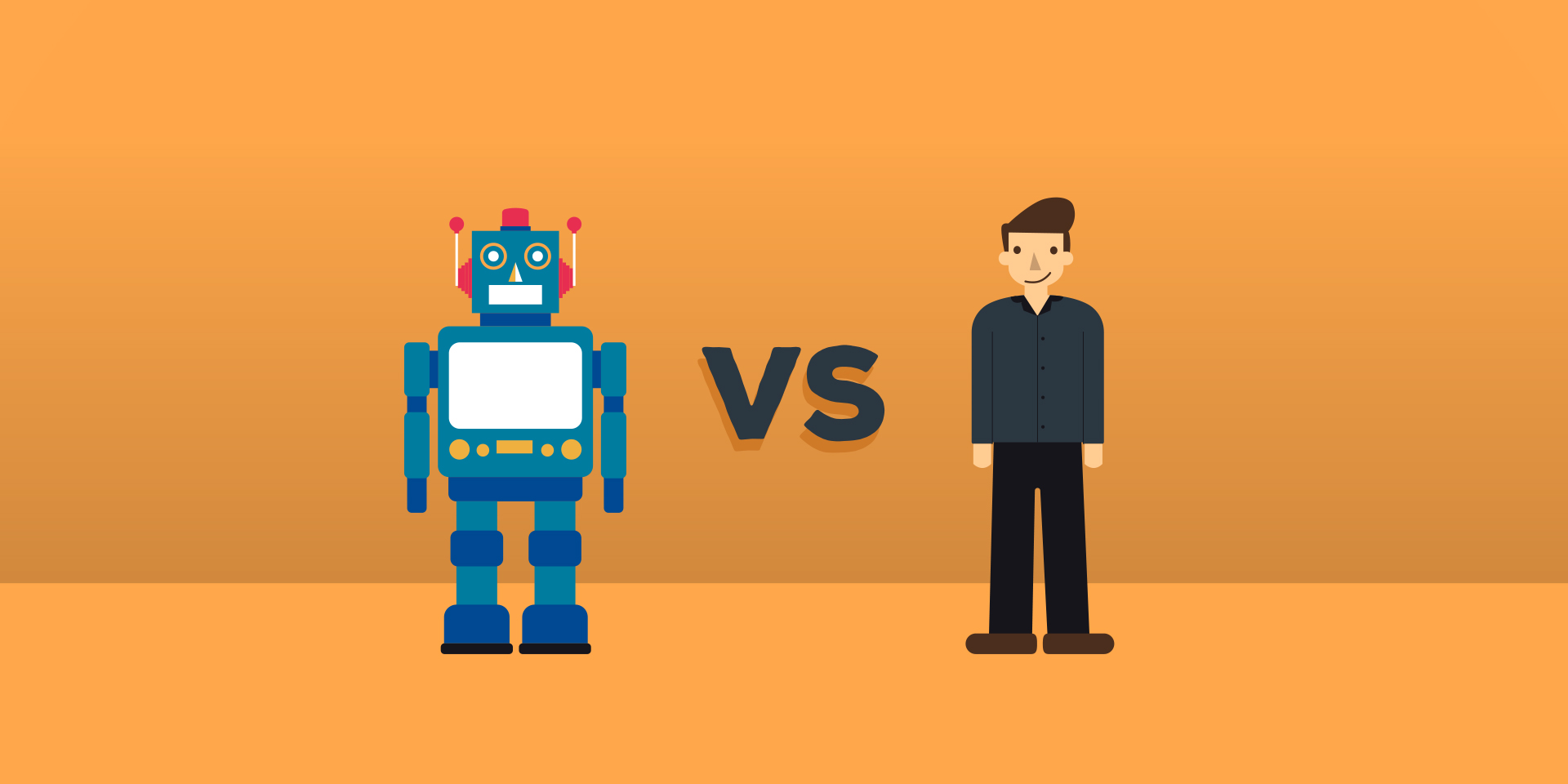
On February 10, 1996, Deep Blue, a computer developed by IBM, won the first out of six chess games against the world’s champion Kasparov. Later, Kasparov won three out of the following five games, and two were stalemated, so at the end the human defeated the machine. In 1997, an enhanced version of this supercomputer called Deeper Blue came up once more against Kasparov and won all the six games played. How did Deeper Blue’s ‘head’ work? Well, with an exponential amount of algorithms that predicted the following move according to the information and the patterns generated from other previous games. In short, it could calculate 200 million positions per second. Unbeatable.
The undeniable fact that Deeper Blue won makes us think with certain sadness and resignation that computers have beaten humans. It also forces us to ask ourselves the question: how will machines evolve?
Machines for everything?
In the last few years we have witnessed how machines have started to take on repetitive tasks in assembly lines, factories, vending or ticketing machines, without forgetting the important field of medicine, where they are used for performing certain surgical operations. It seems that a ‘conventional’ machine can do anything that is repetitive and does not require too much reasoning. Things were like that until recently. Lately, companies from different areas, such as Google, have developed algorithms that go well beyond and make it possible, among other things, for cars to run entirely on their own, without a driver. This was simply unthinkable when Deeper Blue beat Kasparov.
The algorithms developed by Google for driverless cars have succeeded in integrating different random factors, such as the presence of pedestrians, traffic signs, traffic lights and regular traffic conditions. By means of extraordinarily sophisticated algorithms, these cars will be able to manage in this environment and will probably become a reality sooner than we imagine.
Some people may think that this type of vehicles will never drive better than humans, but the figures show the opposite. According to Google, its driverless cars have had eleven minor accidents in the last six years, a period of time in which they have covered almost three million kilometers. Out of these eleven accidents, seven were due to rear impacts and four to side impacts, caused in both cases by cars driven by people. So, who will sell more cars 20 years from now? Obviously, it remains to be seen, but either traditional brands fill the technological gap that separates them from Google and Tesla, or these giants will wipe them out. Actually, we don’t even need to wait 20 years. Visitors attending the next Olympic Games in Tokyo in 2020 will be able to get on driverless taxis.
Increasingly advanced algorithms
It is clear that, as R&D&i departments of large document software companies develop more and more advanced algorithms to efficiently analyze and process texts as well as the graphic structure of documents, optimize the digital signature that guarantees the authenticity of electronic documents, classify documents according to increasingly detailed parameters, etc., the algorithms applied to virtually any business field are becoming increasingly sophisticated and powerful.
Another example of the use of algorithms is the Japanese hotel Henn-na, where clients are taken care of by robots only. There are three of them: one that looks like a human, one that looks like a robot and one that looks like a dinosaur, which is the only one that speaks English. To store luggage, they have a robotic arm inside a room with glass panels. This arm chooses a metal box that matches luggage size and puts it there. In the room, everything is controlled by a small robot that reacts to the client’s voice orders. But the best feature of the hotel is its price. A night costs around 80 dollars, very little considering “normal” hotel prices in Japan, which are usually three times this figure.
User experience in hotels can improve with processes supported by algorithms, like the ones used for Document Output Management, which allows clients to approve an invoice without queuing at reception, paying for the room with a digital signature or having the invoice available when preparing the expense sheet for a business trip. Apart from substantially reducing the cost of traditional technologies, such as printouts, customer satisfaction is significantly increased.
ITC applied to any area
Algorithms underlie all these technological breakthroughs: they use the information available, verify it, compare it with other sources of public information and learn from the data processed and the experience gained in the interaction with humans. It is one of the greatest exponents of Information Technology applied to very different spheres of life.
Does this mean that robots will be more efficient than humans? Yes, it does, because the error margin of robots is virtually zero, as long as the algorithms implemented in their CPUs are correct. The opposite also happens. Some time ago, Facebook launched a new “nostalgia” functionality that highlighted past posts in their profile. The idea was fundamentally good, but life is made up of happy and unhappy moments, and the algorithm was not sufficiently developed to rule out bad moments and avoid reminding users of painful events. Nevertheless, these negative examples are so marginal that they are simply part of the learning curve of algorithm development.
For this reason, the most sought-after professional profiles in the future will most probably be mathematicians, scientists, computer specialists and, in general, people with a powerful logical-thinking mind set. According to the European Commission’s estimates, this type of professions will increase by 14% (as opposed to 3% for the rest) by 2020.
Let’s face it. In the future, most tasks will be performed by some kind of algorithm processing robot. What robots cannot yet emulate, however, is our creativity or our ability to develop social relationships.
Information Sources:
- https://es.wikipedia.org/wiki/Deep_Blue_(computadora)
- http://www.finanzas.com/xl-semanal/magazine/20151108/coches-autonomos-robots-invadieron-9032.html
- http://www.sdpnoticias.com/tecnologia/2015/10/28/japon-se-prepara-para-los-coches-autonomos
- http://www.cnnexpansion.com/tecnologia/2015/07/17/hotel-de-robots-abre-sus-puertas-automaticas-en-japon
André Klein
Freelance Consultant for DocPath
